If you work in ecommerce for giant corporations like Amazon or Pepsi that can throw an unlimited amount of workers at any time-consuming problem, then this article isn’t for you. Rather, if you’re like 99% of most businesses that have a growing internet storefront but don’t have enough hours in the day to properly manage it, then do keep reading.
SMBs that want to grow their ecommerce businesses will quickly run into problems of scale simply because everything takes more time than you initially thought. And as your business grows, so does the time commitment to make sure all the elements are running well and are optimized.
Luckily, there are many ecommerce automations that can slash the time it takes to replicate common tasks.
What Is Ecommerce Automation?
Ecommerce automation can help you with inventory management, email marketing, customer service, and other business processes that would otherwise be virtually impossible to undergo with manual methods.
Ecommerce businesses are fast-growing and rapidly changing. Due to the erratic nature of the ecommerce business, automation needs to be incorporated to make it manageable.
Why You Should Automate Your Business
Automation is the future of all businesses. Marketing automation can help your organization improve its efficiency and free up resources that can be allocated to different tasks. Similarly, an ecommerce business can incorporate automation to simplify its processes.
Automation can help you remove manual tasks and free up resources. For example, integrating inventory management software can allow you to check your stock as it sells. Automation eliminates the need to have an employee manually check the stock and report back on the stock quantity at the end of the day. Other solutions, like content automation tools, can help with social media updates or publishing schedules.
Automation tools rely on real-time processing, which means that as soon as an order is placed and shipped, your inventory will be updated, the customer will get a message about the shipping. You can even set it to reorder stock automatically. These automation tools eliminate the need for more human resources.
The lack of resources needed cuts down costs and improves time efficiency. A machine is capable of doing a task a thousand times better than a human. This not only improves productivity but also cuts down costs and eliminates the risk of human error.
Top Advantages of Automating Your Ecommerce Business
With data growing at the current rate, it’s impossible to manage an ecommerce store manually. Automation is no longer a want; it’s now a need of the times. Automation can help you grow your business, and there are many advantages associated with automation.
Save Time
Automation saves time, especially in the ecommerce market. You can save time not only with inventory management but several other aspects of your ecommerce store. Integrating inventory management software, customer service software, and even marketing automation systems can help improve ecommerce businesses with time efficiency.
Doing all these tasks through manual means can result in a lot of time, not to mention the constant risk of human error, which will take more time to rectify.
Worker Engagement
Automating the mundane tasks your employees are tasked with every day can improve your workers’ engagement. No one wants to sit down every morning and feed an excel sheet with client names and numbers. Automation allows you to get this done while your employees can focus on bigger aspects of the business, like creating future plans and growth strategies.
Automation can also take over several marketing tasks that are otherwise tedious such as tagging and segmenting customers. Marketing automation tools can help your employees focus on strategies rather than just feeding data into a system. The more meaningful tasks you give to your employees, the more likely they are to have higher job satisfaction.
Customer Satisfaction
Your customer is the lifeline of your business, and you need to keep your customer happy. If a customer visits your online store, leaves with a purchase, and comes back again, you have a happy customer. Automation can help you take care of some of your customers’ needs. There will always be a need for real people to communicate with your customers. Still, menial tasks such as tracking an order or filing basic complaints can help you focus better on your customers and offer them the best service.
Your online store will begin to flourish as soon as you improve customer satisfaction, and with the help of automation, a disgruntled customer can be dealt with in a much better manner.
Procurement
Procuring products for your online store can be a tedious task, and failure to fulfill this task properly can disrupt workflow. With the help of automation, businesses can set their systems to automatically place an order once stock starts running low. These systems automate inventory management and simplify the restocking process. This is not only beneficial for the online store but also for the supplier.
Integrating a centralized, automated platform can help you constantly track stock and reorders so that you are never caught out of stock.
Simplify Deliveries
Getting a product delivered to your customer can be a tedious task. There are many moving parts in the delivery process. This can include tracking the order, printing the receipts, and adding shipping labels. For Shopify, this shipping app can perform all these functions seamlessly. Doing this through manual means makes it prone to human error, and the worst-case scenario can have you ship the order to the wrong person.
Delivery automation can do all these tasks with perfect precision. It not only helps with business processes but also improves customer satisfaction. Automation is the future of the online business, and as more and more people are moving towards digital, the need for automation has become greater than ever.
To keep up with the constant demand for online tools, several organizations have built various automation solutions for ecommerce businesses, helping them simplify tasks, save time, cut down costs, and eliminate the possibility of human error.
This can improve customer satisfaction, as well as enhance the engagement and satisfaction of your employees.
Here are 5 ecommerce automation tools you should consider in order to get hours in your day back.
1. Rewind/Replay
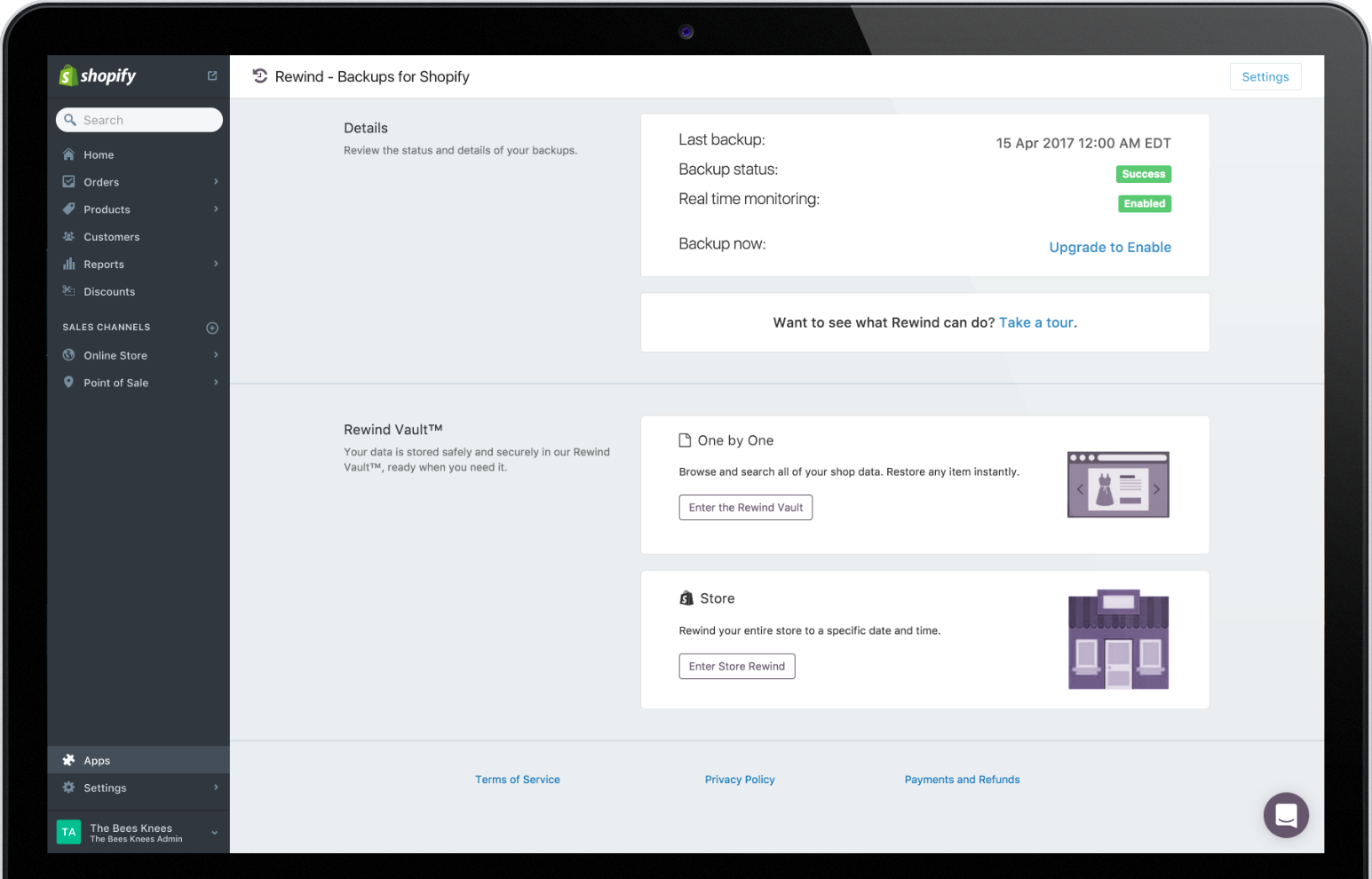
The suite of features that come with Rewind may be no-brainers to many reading this blog, but we frequently hear from Shogun customers who swear by this time-saving product. And while the automatic backups and the undo features are great, what always saves our clients a bunch of time is Replay in the Shopify App Store.
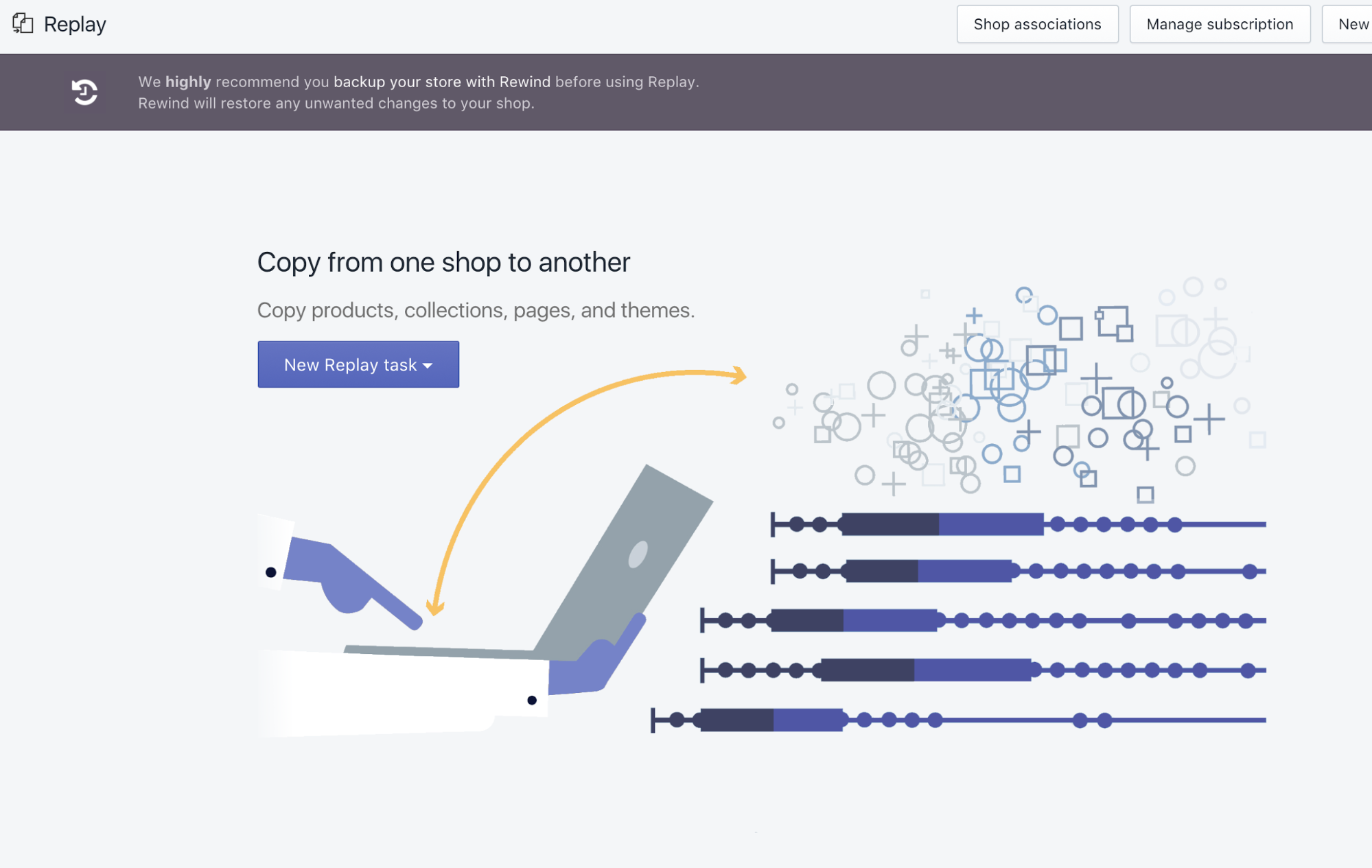
When running an ecommerce store, there ends up being many instances of duplication. Whether you have a few dozen or hundreds of products to feature, it’s incredibly time-consuming to have to build product pages, descriptions, and meta tags from scratch every single time. In fact, as inventory grows and products get updated, building and revising product pages alone can become a full-time chore.
With Replay, we’ve seen SMBs rapidly add to their ecommerce site by leveraging the duplication tools either across a single store or multiple stores. It’s a huge time-saving piece of software that prevents busy managers from having to replicate the same work over and over again, freeing them up to attend to more creative matters.
It just makes sense for bots to do the boring work for you, and copy/pasting is as boring as it gets. Replay is a fantastic tool to minimize this type of work so you can allocate your brainpower to more interesting tasks that can grow your business.
2. Shopify Flow Workflows – Tracking & Segmenting
If you utilize Shopify for your online store, you should also be using Shopify Flow for some pristine ecommerce automation. This powerful series of tools let you automate nearly every step in your process, from adding tags to newly created products to sending Slack notifications for high-risk orders to one of our favorite workflows: tracking and segmenting customers that convert through specific campaigns.
Given enough time, we would all ideally segment our customer list as finely as possible. The better you can segment your base into similar customer profiles, the more effective your marketing, remarketing, and overall sales effectiveness.
Shopify Flow allows you to set up powerful if-then logic which will automatically segment your customers as they come in. Want to track those that arrived off a specific email campaign? Can do. Want to automatically offer checkout discounts to a certain group? Can do.
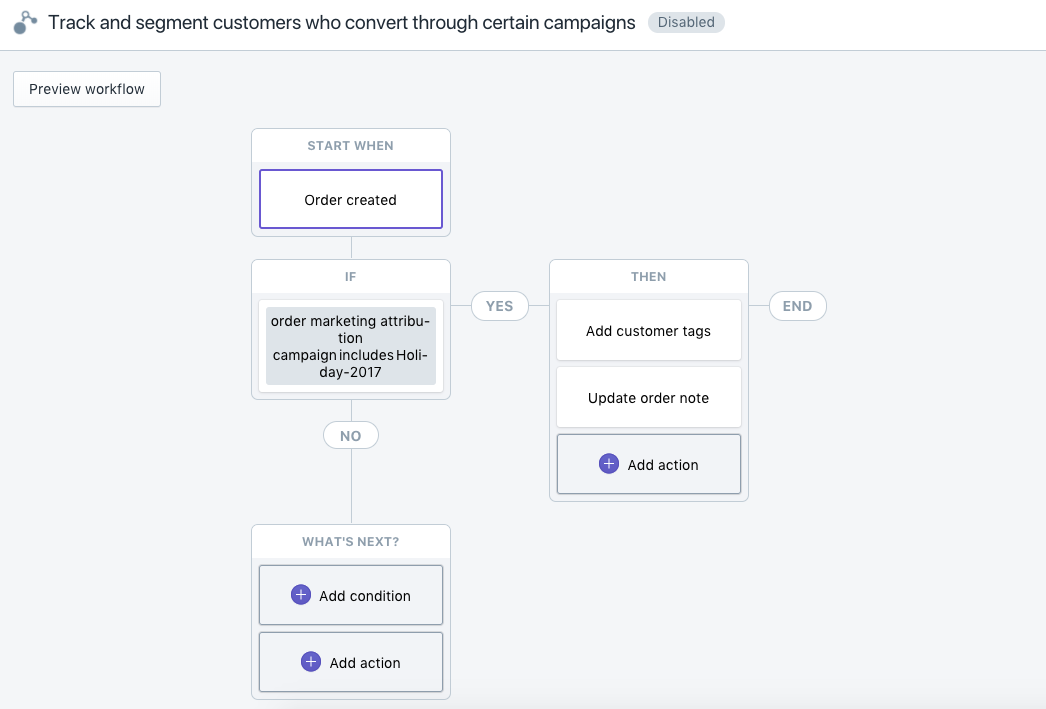
These workflows can ultimately save businesses hours, if not days, of manually tagging and assigning customers to various buckets. With the increase in ROI you can expect to see with targeted marketing that comes from intelligent segmentation, this is a tool that will pay for itself in no time.
3. Buffer & Missinglettr
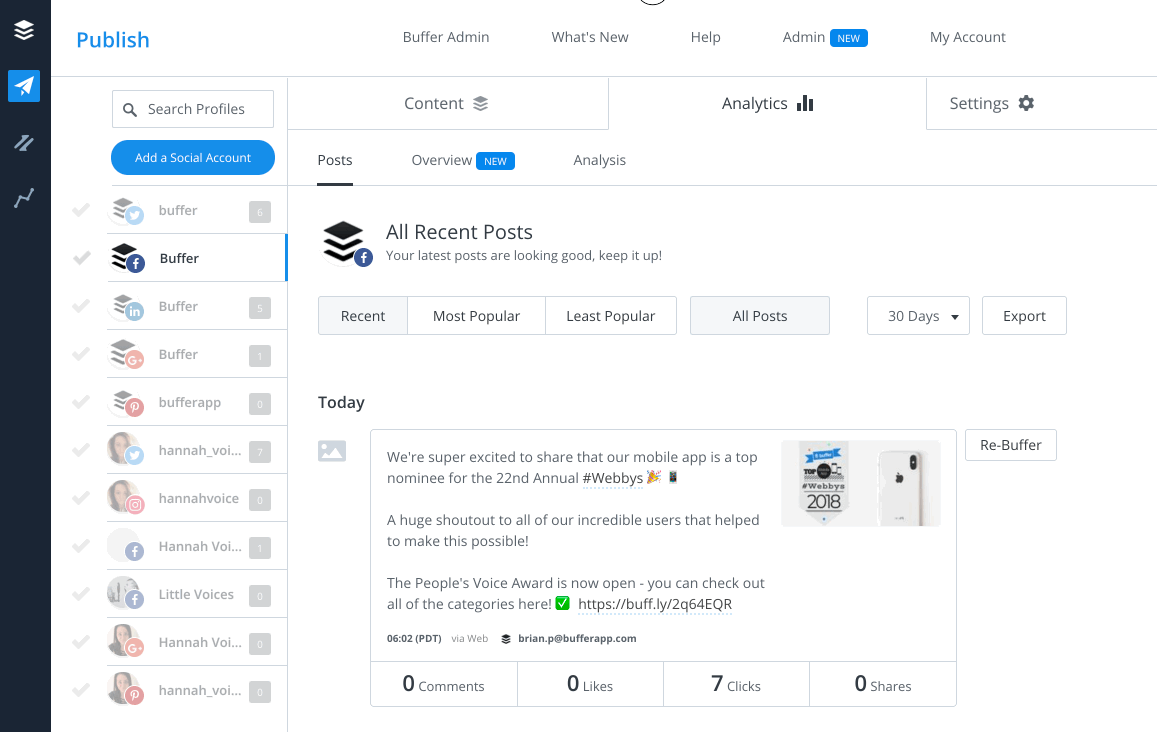
“Why don’t you post more to Twitter and Facebook?”
“Who’s got the time?”
Social media is a blessing and a curse (in both business and your personal life). These various platforms are amazing tools to get your products and services out to the masses, but in an ocean of posts/images/tweets, it’s hard to make any headway unless you dedicate a massive amount of time to running your social media campaigns.
Luckily, you don’t have to hire a GenZ teen to run your Twitter. Social media scheduling tools like Buffer will save countless hours each day by automatically posting for you, while Missinglettr will even create the posts automatically on your behalf.
With Buffer, you can pre-load posts that will get metered out and post automatically at regular intervals. Got a big sale event coming up? Write a bunch of tweets for it in one coffee-fueled sitting, and let Buffer take care of it for the next week or two.
It’s a great way to maximize your limited time to still affect real growth on your social channels. Plus the analytics Buffer provides can give you greater insight into your audience and how certain posts perform at certain times.

Missinglettr uses a fairly intelligent algorithm to literally write your posts for you. While it can’t create an 800-word blog post for you, it can create, say, a year-long Twitter campaign that will retweet a piece of content you created multiple times.
For example, if you point Missinglettr to one of your blog posts, it will pull quotes, excerpts, images, and the title from that post to generate social media posts that will go out today, tomorrow, next week, next month, in 90 days, in 180 days, and in 365 days. It’s an amazing way to “set it and forget it” for each new piece of content you produce; you’ll know it’ll have life on social media without you having to worry about reposting it manually.
The one-two punch of Buffer and Missinglettr is a powerful ecommerce automation suite that can effectively be your social media manager in a pinch.
4. Zendesk
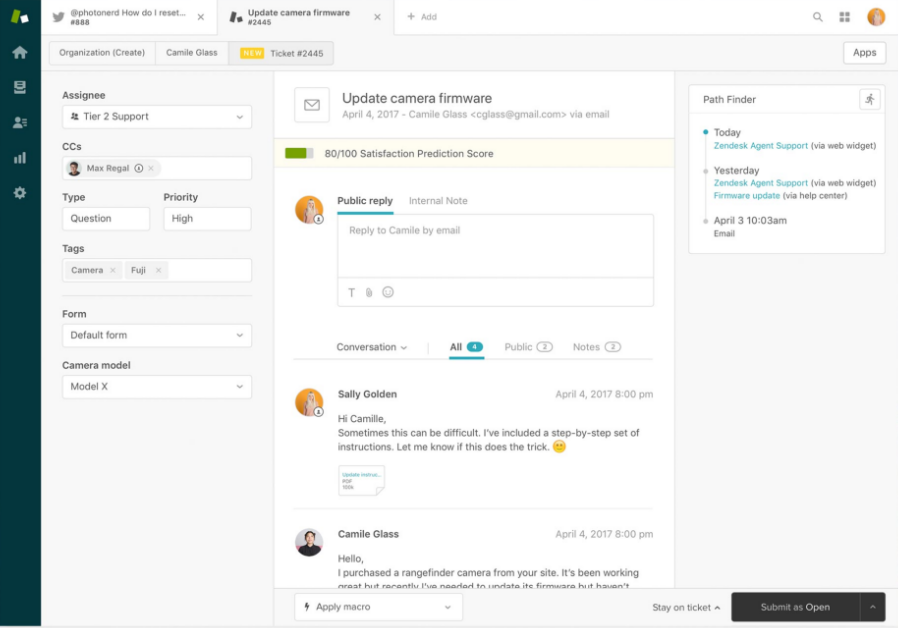
Perhaps the most time-consuming part of running a growing ecommerce shop is customer service. And while delivering great customer service can make or break your business, the number of hours it demands can make or break your soul. That’s where a tool like Zendesk comes in.
First of all, Zendesk provides a centralized platform for all your customer support communication, be it phone, chat, email, or social media. So not only does it provide a uniform experience for your customers, but also for your customer support team so that they don’t have to learn to utilize multiple different communication tools. Second, Zendesk can pop up question fields so customers can specify their specific concerns. This can then funnel customers to the right support staff member, which can save enormous time on both ends.
Remember, studies show that the return rate for online purchases is 15 to 30%. And 61% of customers say that they would consider switching brands after just a single instance of poor service. The stakes are high when it comes to customer service, and it will pay to have a good automated solution for your ecommerce business moving forward.
5. Shogun – Content Scheduling

Much like scheduling your social media posts, one ecommerce automation tool that can save you perhaps even more time is Shogun, specifically the Content Scheduling feature. Instead of having to manage a cluttered calendar of sales, new products, expiring price points, and holiday discounts, you can set automated timers to publish and unpublish certain pages in your ecommerce store.
One of the worst mistakes we see with online deal postings is 404 errors of the deal not being found. Many times, this is due to someone in the business neglecting to activate the product page. It’s a really simple issue… that happens all the time.
Automating this will virtually eliminate this problem, ensuring the right product pages are live and at the right time and also not live when the deals are over. Because it’s sometimes even worse when a potential customer arrives on an expired sale page, and the price at the checkout is higher than what you’ve advertised.
Shogun’s Content Scheduling will not only help you avoid these hiccups but save you time by not having to physically click “publish” and “unpublish” over weekends, early in the mornings, late at night, or if you’re in a different time zone altogether. And the best part is that it’s just one of the automation tools available with Shogun.
What ecommerce automation tools have made your life easier? Tell us in the comments below! And for a free trial of Shogun, check out our website or find us on Shopify or BigCommerce.

For more information about Rewind, please head on over to rewind.com. Or, learn more about how to backup Shopify, backup BigCommerce, or backup QuickBooks Online.



